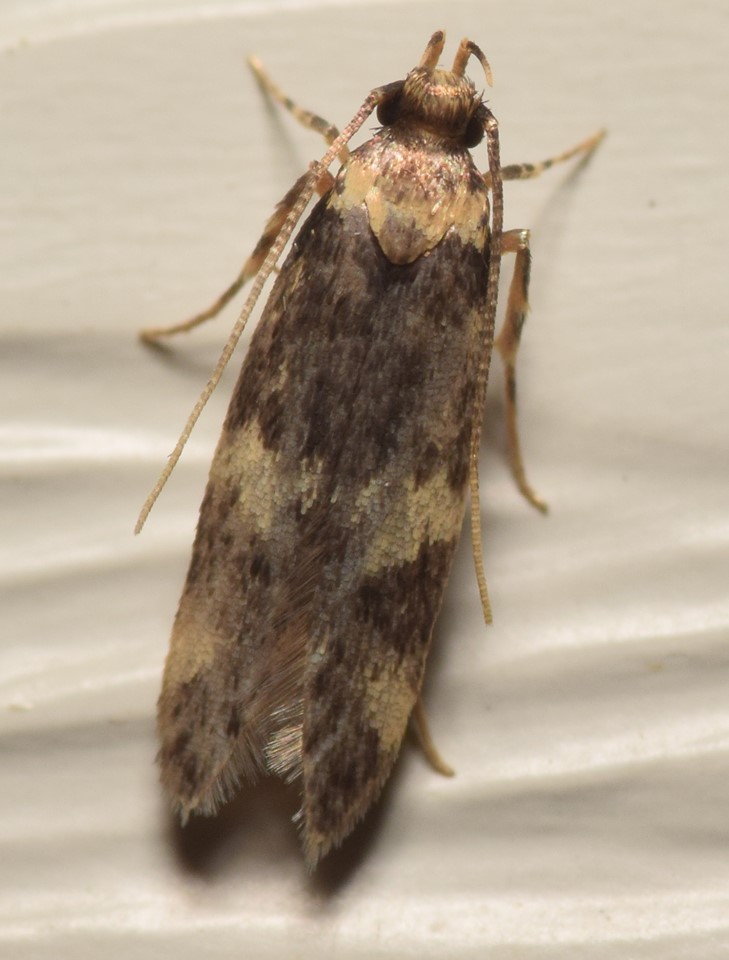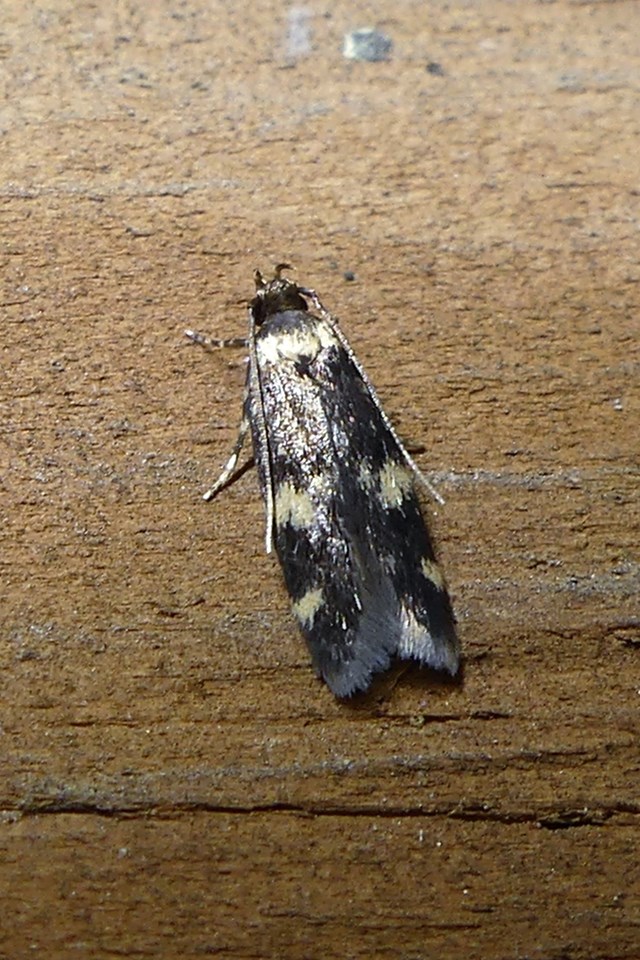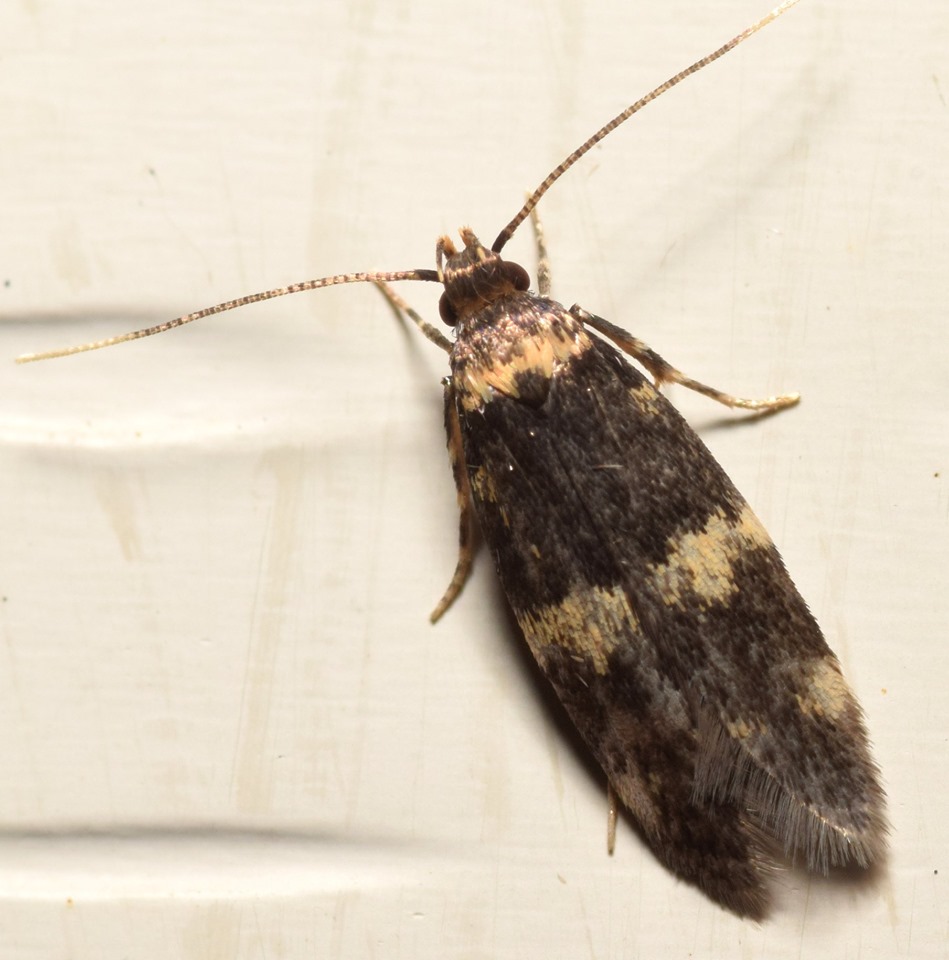ECOLOGY ▪ EDUCATION ▪ ADVOCACY



Oegoconia: Precise meaning is unclear, but combines the Greek words oeg, meaning “open,” and possibly conia meaning “cone.”
novimundi: Precise meaning is also unclear, but combines the Latin words novi, meaning “new,” and mundi meaning “world.”
oh-eg-oh-kohn-eye-uh no-vih-mun-dye
leaf litter moth



This map shows the confirmed sightings of the four-spotted yellowneck moth in Indiana. All sightings were confirmed through photographic documentation by individuals who contributed to the Great American IN Nature Lepidoptera Project (GAIN LP).
 |
GAIN LP documented in county. |
| Date | County | Observer | Notes | Image1 | Image2 |
|---|---|---|---|---|---|
| 2018-09-06 | Porter | Joll, Chris | Adult Bamona confirmed |
 |

|
| Observation Details | Images |
|---|---|
| Date: 2018-09-06 County: Porter Observer: Joll, Chris Notes: Adult Bamona confirmed |

 |
Native to western Europe, Oegoconia novimundi is believed to have been introduced to the east coast of the United States over a century ago. Two other members of genus Oegoconia have also been introduced into the United States, and they are indistinguishable from O. novimundi without dissection or DNA analysis. The identification of members of the genus in Indiana is currently being based on historical range alone. See Genus Oegoconia for further information.
Four-spotted yellowneck moth caterpillars feed on leaf litter and have been reared on oak (Quercus spp.) leaves (Powell & Opler, 2009 as cited by Buguide.net, 2019).
| Known Larval Food Sources in Indiana | ||
| Family | Taxonomic Name | Common Name |
|---|---|---|
| Order: Fagales | ||
| Fagaceae | Quercus spp. | oaks |